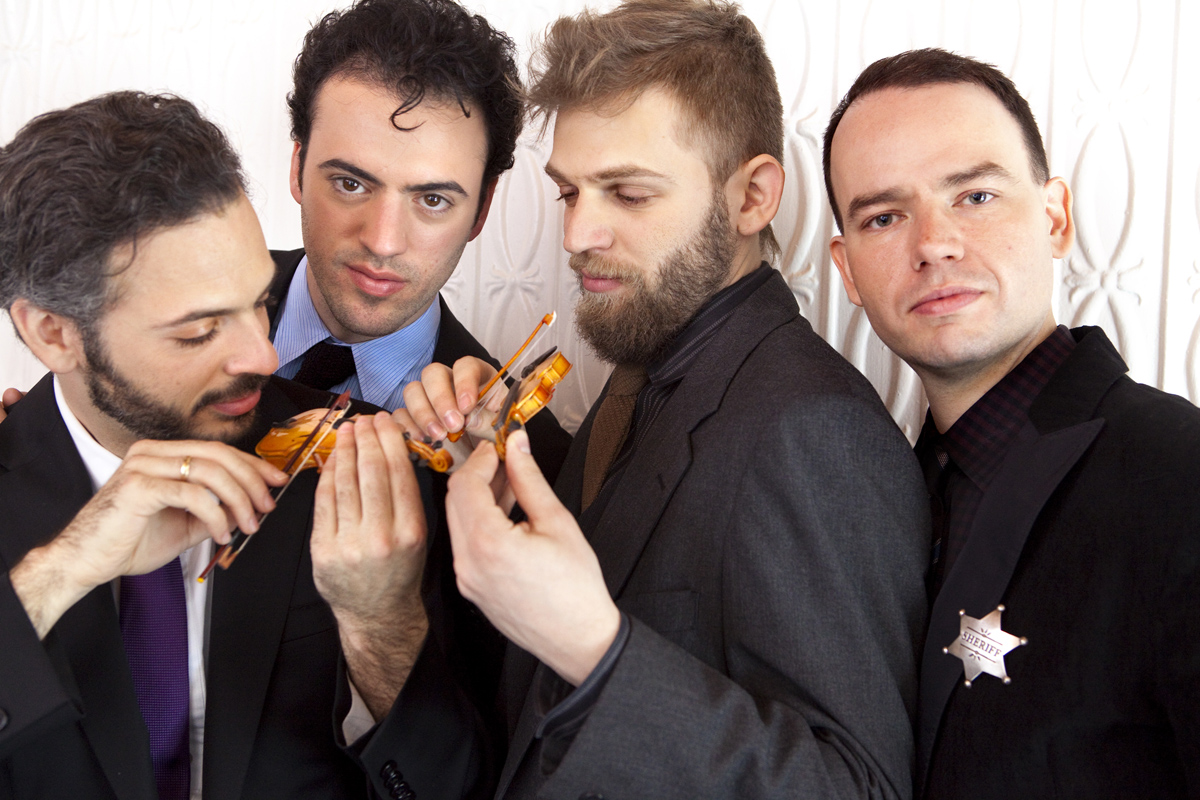Back to school with BRAVO
by Laura Walter, BRAVO education coordinator
Passed by Congress in 2010, House Resolution 275 designates the week beginning with the second Sunday in September as National Arts in Education Week. During this week, the field of arts education joins together in communities across the country to tell the story of the impact of the transformative power of the arts in education.
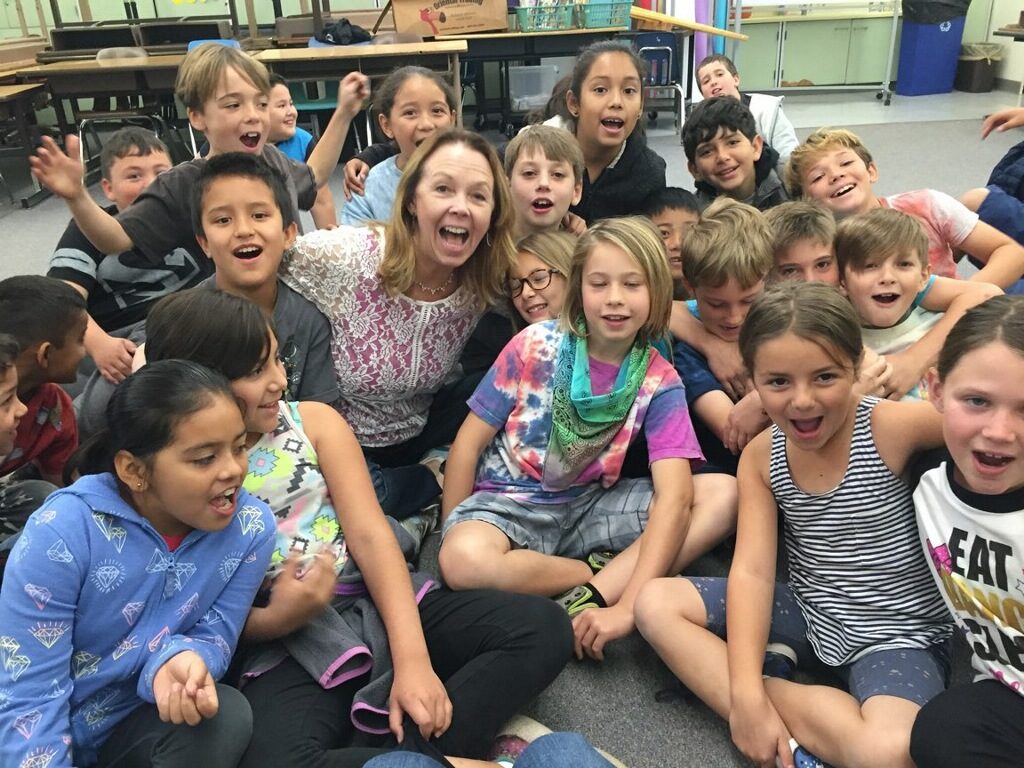
As we begin our school year and recognize how the arts have a significant impact on students, the Festival’s BRAVO education & community program commits to the joy of promoting arts education in our local schools and community.
Music activates both sides of the brain and ties together the auditory system with memory, visual, and movement systems. Often times, children who have learning challenges can shine through music. They learn to interpret symbols, which translates to better reading and math skills.
The opportunity for them to express themselves leads to better self-esteem, and a stronger community. Making music together cultivates a sense of belonging, and leads to a more stable child and adult.
Research has shown that strong social skills are the best indicator of life-long success. Creating music together requires that we listen to each other. We must be regardful of another. And we lend a helping hand so that the whole ensemble excels.
Participating in our local school music programs helps students grow and learn about being part of something that is bigger than ourselves. Benjamin Zander, conductor of the Boston Philharmonic Orchestra and Boston Philharmonic Youth Orchestra remarks, “I have a definition of success. For me, it’s very simple. It’s not about wealth and fame and power. It’s about how many shining eyes I have around me…if the eyes are shining, you know you’re doing it. If the eyes are not shining, you get to ask a question. And this is the question: who am I being that my players’ eyes are not shining? We can do that with our children, too. Who am I being, that my children’s eyes are not shining? That’s a totally different world.”
The Festival’s BRAVO program impacts 2,800 children and provides 1,075 free workshops yearly. Many thanks to the Ojai Festival Women’s Committee and the many local volunteers who support this integral program in the schools.
What teachers are saying about the importance of music in the schools:
“Education Through Music is valuable for many reasons. I enjoy going to the weekly class and participating with my students. With Ms. Laura’s instruction we are learning about music, song, dance, rhythm and at the same time listening, sharing, cooperating and having fun without “crossing the line” into silliness. A student in my class struggled with academics and behavior in the classroom, but he was a shining star in music class. I enjoyed watching him participate and be a leader to his peers as he was often one of Ms. Laura’s helpers in the activities. All the students are made to feel special and important. A big emphasis is placed on the instructor knowing each student’s name and using it throughout the class in different activities. The relationship the students have built with Ms. Laura over the years (some of the 3rd grade students have been working with her since kindergarten) is wonderful, and part of the reason they look forward to music class.” – Ms. Plott, 3rd, Meiners Oaks Elementary
“Because of Laura’s work teaching my students much needed social skills through play and music my class not only continued to grow as young human beings, but they learned acceptance, tolerance and kindness while being taught music. I believe that the Education Through Music program has been a vital support to all our students’ learning. By attending ETM each week the students in my class learned how to stay interested and engaged in an activity. The students learned how to be positive members of a group (the class). In addition, each week through play and music the students were encouraged and taught how to take risks and deal with the fear of standing up in front of their peers. Together with Laura, we worked to increase each child’s self-confidence in order to develop better communication, conflict resolution skills, and better listening skills amongst all the students which was evidenced by increased academic achievement and decreased social-emotional behavior problems.” – Ms. Mejia-Holdsworth, 2nd, Topa Topa Elementary
Ojai & Site-Determination by Ross Karre, ICE percussionist and Director of Production
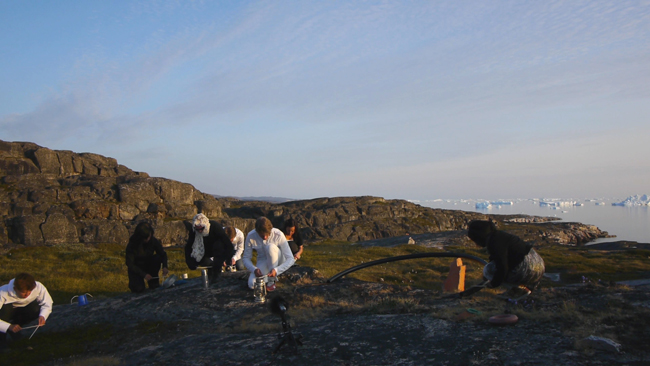
Site-specificity is a common term in art production circles. I think most artists and audiences have a basic understanding of what it means. But I find site-specificity to be a glorification of a process which is required of all good art. Nothing is created in a vacuum. Nothing is presented in a vacuum. The site/context matters. All works are site specific by default but the process of creatively optimizing a work via its context can be the difference between a good realization and a bad one. A performance can either attempt to beat its head against the boundaries of a context or it can ask a simple question, “What changes do I make to this piece to transcribe it for this place?”
It’s a question we’ve been asking from the very first brainstorming sessions for the Ojai Festival programming and production. Whether it’s the Libbey Bowl presentations of intricate sequences of Boulez, Varèse, and Xenakis or the works of John Luther Adams in the park, every program must ask the question.
The answers aren’t always obvious. And some works lend themselves to subtle (or drastic) changes to create a symbiotic relationship between piece and place. In Pauline Oliveros’ works, space and sound are codependent variables. The scores are open and flexible enough to allow extemporaneous performance decisions which are guided by the space: its reverberations, its noise floor, and its general ambiance. From one interpretation to the next, a space may have a more profound impact on a performance than the instrumentation itself! (Note the radical differences in each performance of George Lewis’ Artificial Life on digitice.org, ICE’s digital media library.)
Meet Candida Condor: New Festival Subscriber

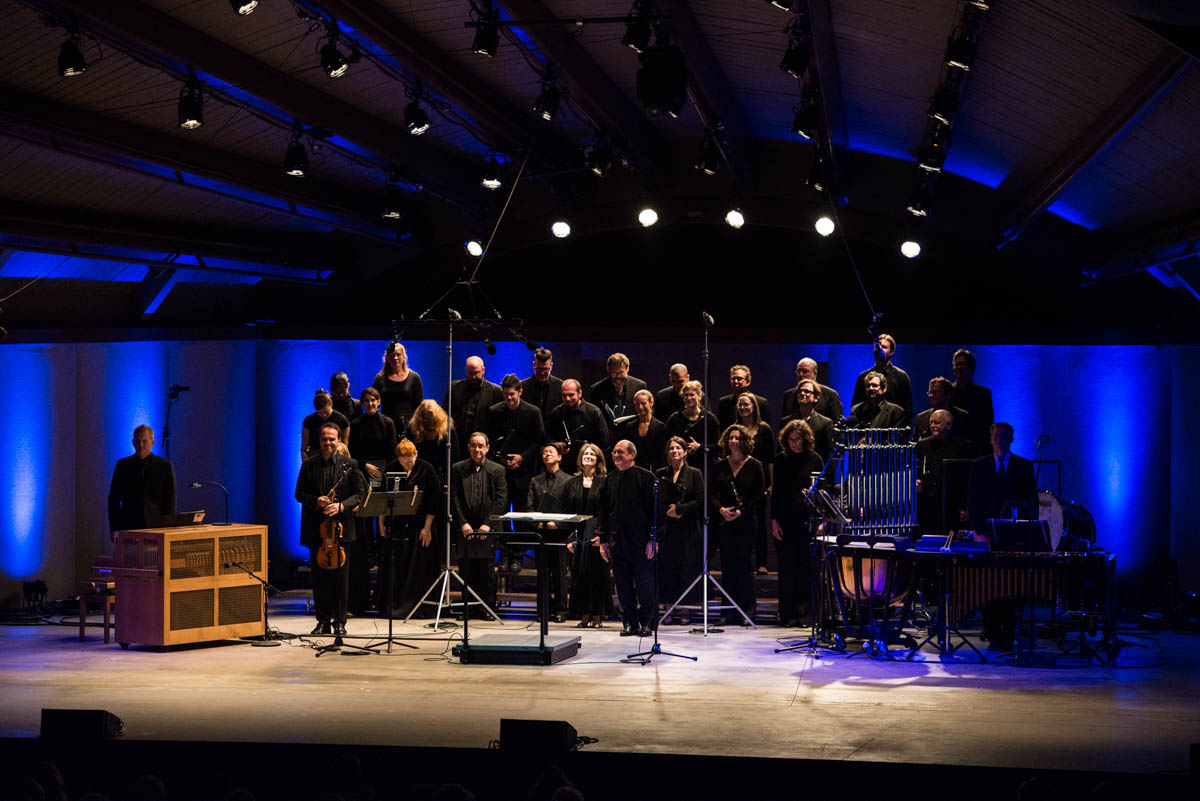
“Earlier this year, 2014, a very dear friend of mine, Annat Provo, invited me to share her series tickets to the Ojai Music Festival. Although I have heard of the Festival for years, I had not attended before. I was delighted to accept her generosity!
The quantity, quality and variety of experience offered by the Festival surprised me. I loved going up to Meditation Mount in the early morning, and staying up late in the balmy evening to be transported by Rothko Chapel – my new favorite music.
Another delightful surprise was the interesting conversation we had with those seated around us. One handsome fellow sitting just in front of me told us about the Rothko Chapel in Houston, about the large canvases hung on the four walls of the spacious room. About the natural light built into the design of the building so that the canvases constantly change as the sun and clouds move across the sky. If I go to Houston, I won’t miss it! And I’ll have the music on my iPod…
Another delightful man, and long-time Festival friend of my friend, was so knowledgeable about the music, the musicians and the composers, and shared so graciously, he brought a greater depth to our appreciation and enjoyment of the excellently executed performances.
I was struck by the community atmosphere I felt everywhere I went. It was such a friendly, warm and welcoming experience. I felt embraced by the music, the town, the weather, and everyone I encountered.
So I now have my own series season ticket and seat — sitting right next to my good friend!”
– submitted by Candida Condor
Have a story to share? Send us an email at [email protected]
Lisa Kaplan Returns to Ojai: Read Her Ojai Q&A

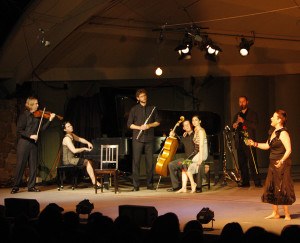 Ojai is a place where alumni enjoy returning, whether to perform or just enjoy the experience as an audience member. Lisa Kaplan is one such member of the Festival family. As one of the members of the groundbreaking ensemble eighth blackbird, Lisa was first here in 2006 when they made their Festival debut performing Frederic Rzewski’s Coming Together, and captivated the Ojai audience. It was at this Festival that Thomas W. Morris, artistic director, approached them to return to the Libbey Bowl as the Festival’s 2009 Music Director. After their memorable and fearless stint in this post, Lisa and the “birds” were asked back to open the new Libbey Bowl in 2011 performing Osvaldo Golijov’s Ayre with Dawn Upshaw. And Lisa didn’t stay away long – just last year she again soaked in the festival experience, this time as an audience member!
Ojai is a place where alumni enjoy returning, whether to perform or just enjoy the experience as an audience member. Lisa Kaplan is one such member of the Festival family. As one of the members of the groundbreaking ensemble eighth blackbird, Lisa was first here in 2006 when they made their Festival debut performing Frederic Rzewski’s Coming Together, and captivated the Ojai audience. It was at this Festival that Thomas W. Morris, artistic director, approached them to return to the Libbey Bowl as the Festival’s 2009 Music Director. After their memorable and fearless stint in this post, Lisa and the “birds” were asked back to open the new Libbey Bowl in 2011 performing Osvaldo Golijov’s Ayre with Dawn Upshaw. And Lisa didn’t stay away long – just last year she again soaked in the festival experience, this time as an audience member!
Now we will welcome her back as both a performer and as a supporter to her very good friend, Jeremy Denk. Read her recent Q&A:
OMF: This will be your 5th time back in Ojai to perform but 4th since you came last year to hang out and enjoy the music. How did it feel to be on the other side of the stage as an audience member?
Kap: It was really wonderful to be on the audience side of the Ojai Festival last year. So relaxing! But also a lot to take in in the course of four days. I have been an admirer of Mark Morris for as long as I can remember, and it was truly inspiring to come out to see h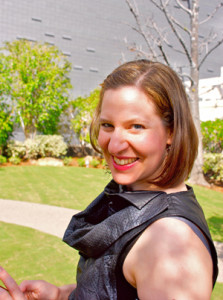 ow he curated the festival. Highlights for me were, the John Luther Adams’ songbirdsongs performed on Meditation Mount at 8am where the sounds of the instrumental bird songs and the actual birds singing their song were completely blurred. Hearing Yulia Van Doren sing Ives and Cowell and Cage, sitting in on toy piano to play In C on a glorious, sunny morning, and Mark’s musical choreography to all of the dance. I was blown away by his piece to Samuel Barber’s “Excursions.” A piano work I’ve never liked but somehow with Mark’s choreography, it absolutely came to life for me. Now when I hear that piece, I can’t help but think of the dancing that goes with it.
ow he curated the festival. Highlights for me were, the John Luther Adams’ songbirdsongs performed on Meditation Mount at 8am where the sounds of the instrumental bird songs and the actual birds singing their song were completely blurred. Hearing Yulia Van Doren sing Ives and Cowell and Cage, sitting in on toy piano to play In C on a glorious, sunny morning, and Mark’s musical choreography to all of the dance. I was blown away by his piece to Samuel Barber’s “Excursions.” A piano work I’ve never liked but somehow with Mark’s choreography, it absolutely came to life for me. Now when I hear that piece, I can’t help but think of the dancing that goes with it.
OMF: What was your advice to Jeremy Denk once Tom Morris asked him to be Music Director for Ojai?
Kap: I told him that it would be a lot of work, but totally worth it! I encouraged him to do something bold and audacious that he may never have the opportunity to do otherwise. Ojai is a playground for those kinds of projects and has a devoted following that isn’t afraid of new work so it is the perfect opportunity to program something innovative or totally crazy!
OMF: This year we are paying tribute to those who inspire us as musicians, artists, and people as well as recalling an “Aha moment” during your path as an artist. Do you have one that you’d like to share?
Kap: I feel so fortunate to have been mentored and inspired by so many wonderful people over the course of my own career. Here’s a recent “Aha moment.”
Several years ago Jeremy and I were rehearsing Mozart’s exquisite 4-hand Sonata in F major. I was so consumed with wanting everything in my part to be absolutely perfect and as a result everything sounded safe and boring. Then, all of a sudden, I missed several notes in a run. I cursed out loud, and Jeremy looked over while still playing and said, “Great! After the first mistake, then the music can begin.” That’s what Sebök used to tell me. Don’t be so worried! Just play with total abandonment and the music will flow.”
I never played Mozart the same after Jeremy said that to me. I was so much less afraid to perform it and it was far easier to just have fun and make music together. The very best part about playing together with someone like Jeremy who is so talented, is that they up your game too. I always learn something new when I share the stage, (or bench) with him.
You can see Lisa Kaplan at the Sunday, June 15, 11am concert, performing in one of the “Canonade” pieces selected by Jeremy Denk. Buy tickets here >>
“Finding Feldman” – Guest Blog by Max Mandel of The Knights

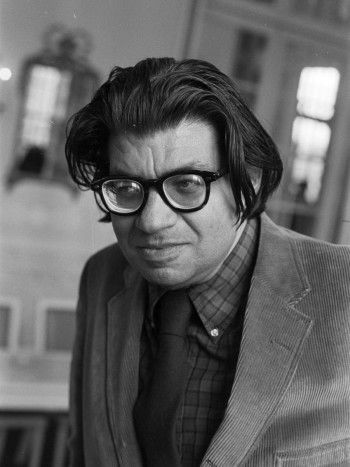 “I feel that the moment, the rightness of the moment, even though it might not make sense in terms of its cause and effect, is very important.” -M.F.
“I feel that the moment, the rightness of the moment, even though it might not make sense in terms of its cause and effect, is very important.” -M.F.
By Max Mandel, violist in The Knights
I find it difficult to talk about Morton Feldman. I’m in awe of his output. I find his music to be exquisitely beautiful and intellectually challenging, a combination very few composers achieve. I often find myself saying to my colleagues, “Yup, another great piece by Feldman.” You start thinking about him and he becomes larger and larger in your mind and at a certain point he becomes too big to deal with. It’s well-known how huge he was. 6 feet, almost 300 pounds. The thick mop of greasy black hair, the coke bottle glasses. The massive appetite, intellectual and sensual, hungry for life. The endless words, the words that poured out of him, the constant conversations with everyone (although he admitted to an interviewer once, “The problem now is that all these things are evasive subterfuges from sitting down and writing that piece of music.”).
He was engaged in a lifelong debate with the musical giants of his time: Boulez, Cage, Stockhausen. After you’re captured by his music, the legend of the man becomes almost even more captivating. For me there is a ghoulish danger there. A strange thing about living in New York City is this continual pull of the legends and the ghosts that live here. I was standing at the corner of 72nd and Central Park West when some tourists haltingly inquired, “Excuse…could you please show where the Beatle was…” they trailed off in embarrassment and yeah, they should be embarrassed, a human being was murdered right there. I shook my fist at them after pointing them in the right direction because I recognized myself in their faces.
“Our Ears Are Open Now” – Guest Blog by Colin Jacobsen

nothing is accomplished by writing a piece of music
nothing is accomplished by hearing a piece of music
nothing is accomplished by playing a piece of music
our ears are now in excellent condition.
So said the ever-provocative John Cage. I suppose this statement could be read as a kind of nihilism, but I see it as Cage prodding the whole musical triangle (composer, performer, listener) to remember to strip oneself of preconceptions as much as possible and allow a sense of wonder back in so that there can be the possibility of Magical Musical Moments (which I will take to calling MMM… onomatopoeia-style. For the record, that is the sound that I’ve witnessed many a Persian and Indian musician emit in the moment when another musician makes a beautiful or telling musical phrase or gesture. Not advocating for that necessarily in a Mozart Symphony, but then again, why not? But I digress…) And I sense that I’m speaking to the choir when talking to Ojai Music Festival fans. I haven’t experienced the Festival before, but have heard from all accounts (including my wife, Maile Okamura who as a member of the Mark Morris Dance Group, was there performing last year) that people come ready to really, really listen and live the experience. Still, at every point along the way it’s useful to reexamine the intention one is putting into the activity at hand and realize the potential to be ever more present, on all sides of that triangle.
Hmm, so I’d like to examine from the composer/performer’s side some aspects that are necessary for MMM to happen through the lens of some of the music we’ll be playing in Ojai. I see part of that job as allowing the audience its own space in the music, meaning that it’s an open dialogue, and though the composer/performer should have a point of view and the courage of one’s convictions, there needs to be space for the listener to have their own experience inside the music. So let me know when you see me (or feel free to write a response to this) what you think the listener’s responsibility is in greater detail. In the meantime, some thoughts on composers/performers…

